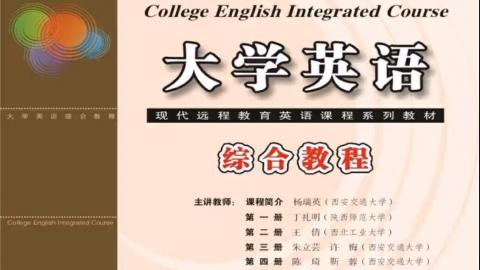一般现在时
be 动词
行为动词
一般现在时的用法
1.表示经常或习惯性的动作。
2.表示客观存在及普遍真理
3.表示格言或警句
4.表示目前的情况或状态
5.以here,there等开始的倒装句,表示动作正在进行e.g. Here comes the bus/There goes the bell
6.在下列情况下表示将来
a.在状语从句中一般现在时代替一般将来时
b.在the more...the more...(越什么越什么)句型中,前者通常用一般现在时代替一般将来时,因为前者相当于条件状语从句。
c.在make sure(certain),see to it,mind, care,matter后的宾语从句的谓语动词用一般现在时代替一般将来时。
d.表示按计划或时间表将要发生的动作,通常有表示将来的时间状语。
pride goes before a fall 骄者必败
一般现在的用法:
(1)一般现在是经常或习惯性的动作,常与表示频度的时间状语every day, usually, always,often,some-imes, on sunday等连用。
eg. I go to school at 6 every morning.
我每天早上6点去学校。
(2)一般现在时表示客观存在及普遍真理。
eg. Summer follows sping.
春天之后是夏天。
(3)一般现在时表示格言或警句。
eg. Pride goes before a fall. 骄者必败。
(4)一般现在时表示目前的情况或者状态。
eg. I am a teacher.
(5)以here,there等开始的倒装句,表示动作正在进行。
eg. Here comes the bus. =The bus is coming.
车来了。
(6) 在下列情况表示将来:
A. 在状语从句中用一般现在时代替一般将来时。
eg. I will give it to him as soon as I see him. 我一看见他就交给他。
B. 在 the more ... the more...(越......越......)
句型中,前者通常用一般现在时代替一般将来时,因为前者相当于条件状语从句。
eg. The harder you study, the better results you will get. 你学习越努力,成绩就会越好。
C. 在make sure (certain),see to it,mind,care,matter后的宾语从句的谓语动词用一般现在时代替一般将来时。
eg. See to it you are not late again.
注意别再迟到了。
D. 表示按计划或时间表将要发生的动作,通常有表示将来的时间状语。
eg. The plane takes off at 11:30 and arrives in Shanghai at 1:20.
飞机十一点半起飞,一点二十抵达上海
it’s time to + 做什么的时候到了
speak lan'gu
Be是动词,
否定句主语+be+not+其他
He is not a worker他不是工人
the more ...the more ...越.........越...........
一般现在时
9.26 6:38 4
C在make sure(certain),see to it ,mind,care,matter后的宾语从句的谓语动词用一般现在时代替一般将来时
例:See to it that you are not late again
注意别迟到了
D表示按计划或时间表将要发生的动作,通常有表示将来的时间状语。
例:The plant takes off at 11:30 and arrives in Shanghai at 1:20飞机十一点半起飞,一点二十分抵达上海
注意:这种用词只限于少数动词,如begin, start,end ,finish, stop, go, come , leave , return , close , open等
一般现在时的用法
否定句:主语+be+not+其他
一般疑问句:Be++
一般现在时
1、be动词:主语+be(am、is、are)+其他
2、行为动词:主语+动词原形+其他
3、当主语为第三人称单数(he、she、it)时,要在动词后面加-s或-es
变化
be动词的变化
否定句:主语+be+not+其他
一般疑问句:be+主语+其他
特殊疑问句:疑问词(who 、how、where、when)+一般疑问句
2、定位动词的变化
(1)否定句:主语+don't(doesn't)+动词原形+其他
当主语为第三人称单数时,要用doesn't构成否定句。
当主语为第三人称单数,要用does构成一般疑问句。
(2)一般疑问句:do(does)+主语+动词原形+其他
(3)特殊疑问句:疑问词+一般疑问句
一般现在时的用法
一般现在时表示经常性或习惯性动作,常与表示频度的时间状语(every day,usually、always、often、sometimes,on sunday)
一般现在时表示客观存在及普遍真理
一般现在时表示格言或警句
pride 骄傲
一般现在时表示目前的情况或状态
以here,there等开始的倒装句,表示动作正在进行。
在下列情况下表示奖励
a、在状语从句中用一般现在时替代一般将来时
b、在the more......the more(越。。。越。。。)句型中,前者通常用一般现在是代替一般将来时,因为前者相当于条件状语从句
c、在make sure(certain 某些),see to it,mind,care
,matter后的宾语从句的谓语动词用一般现在时代替一般将来时
d、表示安计划或时间表示将要发生的动作,通常有表示将来的时间状语。(这种用法只限于少数动词,瞬间动词,如begin,start,end,finish,stop,go,come,leave,arrive,return,close,open等)
let's do it 固定搭配
一般现在时:
1、be动词:主语+be+其他成分
I am\he is\you are
2、行为动词:
a.主语+动词原形+其他成分
e.g. we study English.
b.主语为第三人称单数,动词后加s\es
e.g. Mary likes Chinese.
3、be动词的变化:
a.否定句:主语+be+not+其他成分
e.g. He is not a student.
b.一般疑问句:Be+主语+其他成分
e.g. Are you a student?
c.特殊疑问句:疑问词+一般疑问句
e.g. Where is my bike?
4.行为动词的变化:
a.否定句:主语+don't(doesn't)+动词原形+其他成分
e.g. I don't like apple./He doesn't like apple.
b.一般疑问句:Do(Does)+主语+动词原形+其他成分
e.g. Do you like apple?/Does he like apple?
c.特殊疑问句:疑问词+一般疑问句
e.g. What do you like?
一般现在时
be动词
主语+be+not+
be+主语+其他
(2)行为动词的变化
(3)一般现在时的用法;
1.在状语从句中用一般现在时代替一般将来时
2.the more
eg;
1.we often play in the piayground..
2.Does mike read english every day?
3.She likes milk.
be动词
主语+be+not+
be+主语+其他
(2)行为动词的变化
(3)一般现在时的用法;
1.在状语从句中用一般现在时代替一般将来时
2.the more
eg;
1.we often play in the piayground..
2.Does mike read english every day?
3.She likes milk.
一、一般现在时的构成
一般现在时的构成有三种情况:
(1)be 动词: 主语 + be (am,is,are) + 其他。
(2)行为动词:主语+动词原形(+其他)。
当主语为第三人称单数(he,she,it)时,要在动词后加 -s 或 -es。
二、一般现在时的变化
1、be 动词的变化
(1)否定句:主语 + be +not + 其他。
(2)一般疑问句:Be + 主语 + 其他。
(3)特殊疑问句:疑问词 + 一般疑问句。
2、行为动词的变化
(1)否定句:主语 + don't ( doesn't ) +动词原形 (+其他)。
当主语为第三人称单数时,要用 doesn't 构成否定句。
(2)一般疑问句:Do ( Does ) + 主语 + 动词原形 + 其他。
当主语为第三人称单数时,要用 does 构成一般疑问句。
(3)特殊疑问句:疑问词 + 一般疑问句。
三、一般现在时的用法
(1)一般现在时表示经常性或习惯性的动作,常与表示频度的时间状语 every day,usually,always,often,some-times,on sunday 等连用。
(2)一般现在时表示客观存在及普遍真理。
e.g. Summer follows spring.
春天之后是夏天。
(3)一般现在时表示格言或警句。
e.g. Pride goes before a fall. 骄者必败。
(4)一般现在时表示目前的情况或状态。
(5)以 here,there 等开始的倒装句,表示动作正在进行。
e.g. Here comes the bus. = The bus is coming. 车来了。
There goes the bell. = The bell is ringing.
铃响了。
(6)在下列情况下表示将来:
A. 在状语从句中用一般现在时代替一般将来时。
B. 在 the more……the more……(越……越……)句型中,前者通常用一般现在时代替一般将来时,因为前者相当于条件状语从句。
C. 在 make sure ( certain ),see to it,mind,care,matter 后的宾语从句的谓语动词用一般现在时代替一般将来时。
D. 表示按计划或时间表将要发生的动作,通常有表示将来的时间状语。
注:这种用法只限于少数动词,如 begin,start,end,finish,stop,go,come,leave,arrive,return,close,open 等。
一般现在时的构成有三种情况
(1)be动词:主语+be(am,is,are)+其他
e.g i am a boy
(2)行为动词:主语+动词原形(+其他)
e.g行为动词:主语+动词原形(+其他)
e.gWe study English.我们学习英语
当主语为第三人单数(he,she,it)时,要在动词后加-s或-es
e.g Mary likes Chinese玛丽喜欢汉语,
二,一般现在时的变化
be 动词的变化
(1)否定句,主语+be+not+其他
e.g He is not a worker.他不是工人
(2)一般疑问句:Be+主语+其他
e.g Are you a student?你是学生吗?
Yes. I am./No, I'm not.是,我是的。/不,我不是的。
(3)特殊疑问句:疑问词+一般疑问句
e.g Where is my bike?我的自行车在哪?
2.行为动词的变化
(1)否定句:主语+don't(doesn't)+动词原形(+其他)。
e.g i don't like bread.我不喜欢面包
